
February 2012
Welcome to Net Results EXPRESS
Net Results EXPRESS (NRx) is an award-winning, monthly e-newsletter highlighting medical and scientific breakthroughs, major grants and honours awarded, and other research-related events at UHN. Through NRx you can read about ongoing research at our five research institutes, the Ontario Cancer Institute (OCI), the Toronto General Research Institute (TGRI), the Toronto Western Research Institute (TWRI), the Toronto Rehabilitation Institute (TRI) and the Techna Institute for the Advancement of Technology for Health (Techna). We hope you will find this newsletter informative and helpful. If you have feedback or questions, please contact www@uhnresearch.ca. Christopher J. Paige, PhD, FCAHS |
Structural Biology: Looking Into the Mechanics of Calcium Release
In an elegant series of studies, Dr. Ikura and his team examined the specific area of these protein ion channels that detect the calcium signals—specific chemicals that bind to the proteins—that lead to ‘activation’ or opening of the channels and subsequent calcium release. They found that both types of channels were composed of very comparable protein structures with specific regions oriented or positioned in a similar manner. When activated, these regions reoriented themselves to ‘gate’ the channel—this repositioning was similar in both InsP3Rs and RyRs. These observations demonstrate structural and functional conservation between the different calcium channels and provide important new insights into how the spatial reorientation of protein regions plays a role in the mechanics of calcium release at a cellular level. Structural and functional conservation of key domains in InsP3 and ryanodine receptors. Seo MD, Velamakanni S, Ishiyama N, Stathopulos PB, Rossi AM, Khan SA, Dale P, Li C, Ames JB, Ikura M, Taylor CW. Nature. 2012 January 29. [Pubmed abstract] This work was supported by the Heart and Stroke Foundation of Ontario, the Wellcome Trust, the Biotechnology and Biological Sciences Research Council, the Medical Research Council, the Canadian Institutes of Health Research, the National Research Foundation of Korea, the Canada Research Chair in Cancer Structural Biology and the Princess Margaret Hospital Foundation. |
Development: Imprinting in the Mouse Genome
Research out of TWRI has shed light on how the brain determines which copies of parental genes—known as imprinted genes—will be active or inactive. TWRI Senior Scientists Drs. Cathy Barr and James Eubanks, in collaboration with the University of California San Diego and the Ludwig Institute for Cancer Research, have published a comprehensive study identifying the largest number of imprinted regions in the mouse genome ever reported. Gene imprinting occurs through DNA methylation—a chemical modification to DNA, when present, prevents expression of a gene. As there are two copies of each chromosome in the genome, the parental identity of a gene—whether the expressed gene originated from the father or mother—can be determined if one copy is methylated, while the other is not, known as differential methylation. The team identified 78 discrete differentially methylated regions associated with imprinting in the mouse genome, of which 23 were previously unknown. “Understanding how these limited imprinted regions control regulation can help us better understand how certain diseases happen,” says Dr. Barr. The researchers also found a type of DNA methylation in the brain that was previously only seen in embryonic cells. “At this point we do not know what the significance of this modification is in brain but it is very specific, suggesting an important biological function,” adds Dr. Eubanks. Base-resolution analyses of sequence and parent-of-origin dependent DNA methylation in the mouse genome. Xie W, Barr CL, Kim A, Yue F, Lee AY, Eubanks J, Dempster EL, Ren B. Cell. 2012 February 17. [Pubmed abstract] This work was supported by the Krembil Seed Development Fund, an Applied Biosystems (Life Technologies) 10K Genome award, the Ludwig Institute for Cancer Research, the NIH Epigenomics Roadmap Project and the National Human Genome Research Institute. |
Breast Cancer: Risks and Benefits of Prevention
The study followed postmenopausal women receiving exemestane who did not have osteoporosis and have not been prescribed drugs for bone-related disorders over a period of two years. Changes in bone mineral density (BMD) were determined through measurements of the distal radius—one of two bones in the forearm and a common site for osteoporotic fractures—by high-resolution peripheral quantitative computed tomography. It was discovered that 65% of women taking exemestane had clinically significant BMD loss, three times higher than postmenopausal women not taking the drug. “The findings of our study suggest that we need to weigh the individual risks and benefits when considering exemestane for the primary prevention of breast cancer,” says Dr. Cheung. “For women taking exemestane, regular bone monitoring and adequate calcium and vitamin D supplementation are important.” Bone density and structure in healthy postmenopausal women treated with exemestane for the primary prevention of breast cancer: a nested substudy of the MAP.3 randomised controlled trial. Cheung AM, Tile L, Cardew S, Pruthi S, Robbins J, Tomlinson G, Kapral MK, Khosla S, Majumdar S, Erlandson M, Scher J, Hu H, Demaras A, Lickley L, Bordeleau L, Elser C, Ingle J, Richardson H, Goss PE. Lancet Oncology. 2012 February 6. [Pubmed abstract] This work was supported by the Canadian Breast Cancer Research Alliance, the Canadian Institutes of Health Research and the Canadian Cancer Society. |
Neurology: Controlling the Growth of Neurons
Dr. Monnier’s group discovered that RGMa is cut, or cleaved, by the proteins SKI-1 and Furin, producing seven forms of the protein. Interestingly, six forms are able to inhibit neuronal growth through interaction with another protein, Neogenin. Together, these proteins contribute towards the proper guidance of neuronal growth and development. “These results have important implications for our understanding of the regulation of neuronal growth,” explains Dr. Monnier. “Uncovering multiple forms of RGMa and how they function in the cell will help with the development of novel therapeutics that target neuronal growth in the treatment of disease.” SKI-1 and Furin generate multiple RGMa fragments that regulate axonal growth. Tassew NG, Charish J, Seidah NG, Monnier PP. Developmental Cell. 2012 February 14. [Pubmed abstract] This work was supported by the Heart and Stroke Foundation of Ontario and the Canadian Institutes of Health Research. |
Stroke: Exercise Program for Rehabilitation
98 stroke patients were assessed through CPET at the beginning and end of a six months exercise training program consisting of a 90-minute exercise class once a week. Initially, 68% of stroke patients were able to attain exercise intensity sufficient to warrant use of this program. After six months, 85% of stroke patients were able to attain sufficient exercise intensity. The test identified electrocardiographic abnormalities in at least one of every ten patients on baseline and six month tests, suggesting that the CPET is suitable for prescribing safe and effective exercise at different stages of rehabilitation. “This study identified the ranges necessary for patients to achieve exercise and safety levels,” says Dr. Brooks. “Exercise programs prescribed without information from CPET may not provide enough of a benefit or may even worsen a cardiovascular issue.” The feasibility of cardiopulmonary exercise testing for prescribing exercise to people after stroke. Marzolini S, Oh P, McIlroy W, Brooks D. Stroke. 2012 February 9. [Pubmed abstract] This work was supported by the Provincial Rehabilitation Research Program from the Ministry of Health and Long-Term Care and the Heart and Stroke Foundation Centre for Stroke Recovery. |
Cancer: Preventing Tumours in Retinoblastoma
Using genetic mouse models of retinoblastoma, Dr. Bremner discovered that the growth of these tumours requires high levels of activity of two proteins: E2F and Cdk2. A reduction in activity of these proteins drastically reduced cancer frequency and, in some cases, entirely prevented tumour formation. A brief, one week treatment of pregnant mice with drugs that block the activity of these proteins was found to protect the fetus and reduce tumour formation in adulthood. “Our data suggest that drugs targeting E2F and Cdk2, untested or largely disappointing as therapeutics, respectively, may effectively prevent cancer in individuals with an RB mutation,” says Dr. Bremner. “Complimentary to this study, we are examining if direct delivery to the eyes of young newborn mice is also effective in preventing the emergence of new tumours.” Established and new mouse models reveal E2F1 and Cdk2 dependency of retinoblastoma, and expose effective strategies to block tumor initiation. Sangwan M, McCurdy SR, Livne-Bar I, Ahmad M, Wrana JL, Chen D, Bremner R. Oncogene. 2012 January 30. [Pubmed abstract] This work was supported by the Canadian Institutes of Health Research, the Foundation Fighting Blindness—Canada, the Ontario Institute for Cancer Research and the Terry Fox Research Institute. |
 |
![]()
Designed by TGRI Scientific Associate Dr. Gordon Tait and Tabby Lulham, a member of the PIE team, VIC simulates patient encounters in the clinic to exercise the clinical reasoning skills of trainees. Users conduct a virtual patient exam, order appropriate laboratory tests, review diagnostic images and consult with specialists in gathering the information to arrive at a diagnosis. After the trainee selects the diagnosis and management plan, the program provides a debriefing, listing the actions taken that were essential, were inappropriate, and were done in an incorrect order. The user’s performance in assessing the patient is evaluated by comparing their time, cost and score with the optimal results for the case.
The first users of this software, commercialized and marketed through the Techna Institute, include clinicians at the Toronto General, Mount Sinai and St. Michael’s Hospitals.
More information on VIC can be found here.
CAPCR is an interactive online tool that coordinates all the required approvals for new studies. Researchers will be able to submit a single research application which will then be sent electronically to all of the required departments for project approval (e.g., Grants and Contracts, Research Ethics Board, Research Facilities Planning, Investigational Drug Services, etc.). Once completed, an Institutional Authorization letter will be issued to verify your approval to begin conducting your clinical research.
For more information about this initiative please visit the CAPCR webpage or contact Leanne Ramirez at capcr@uhnresearch.ca.
 Dr. Fei-Fei Liu, OCI Senior Scientist, was recently selected as the Scientific Honouree for the Israel Cancer Research Fund’s (ICRF) Women of Action, 2012. Dr. Liu was recognized for her focus in translational molecular oncology for the development of novel therapeutics for human breast and head/neck cancers.
Dr. Fei-Fei Liu, OCI Senior Scientist, was recently selected as the Scientific Honouree for the Israel Cancer Research Fund’s (ICRF) Women of Action, 2012. Dr. Liu was recognized for her focus in translational molecular oncology for the development of novel therapeutics for human breast and head/neck cancers.Since it’s inception in 1975, the ICRF has raised more than $39 million that has been used to support over 1,600 research grants, making it one of the largest single sources of private funds for cancer research in Israel.
Feedback
Net Results EXPRESS is brought to you by UHN Research Communications. We hope you have enjoyed receiving this message. If you have any feedback, please email www@uhnresearch.ca.
To access archived issues of Net Results EXPRESS, visit uhnresearch.ca/news/netresultsexpress
Some images adapted from the image archives of stock.xchng.ca, Wikipedia and Dr. Mitsuhiko Ikura.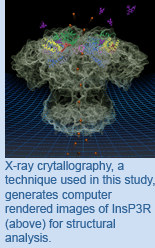 Calcium is essential for living organisms. Throughout our lives, calcium serves as a key molecule in our bodies, controlling many biological processes such as heart beat and neural transmission. At the cellular level, it is known that specialized proteins act as channels that control the release of these ions yet how exactly they do this is not completely understood. To shed light on how the release of calcium ions is controlled (or ‘gated’), OCI Senior Scientist Dr.
Calcium is essential for living organisms. Throughout our lives, calcium serves as a key molecule in our bodies, controlling many biological processes such as heart beat and neural transmission. At the cellular level, it is known that specialized proteins act as channels that control the release of these ions yet how exactly they do this is not completely understood. To shed light on how the release of calcium ions is controlled (or ‘gated’), OCI Senior Scientist Dr. 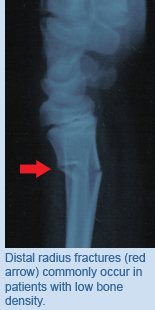 Exemestane is a drug that effectively prevents the recurrence of breast cancer in postmenopausal women. Due to the effects of exemestane on estrogen levels—the female sex hormone—it has the potential to affect bone density. An investigation from TGRI Senior Scientist Dr.
Exemestane is a drug that effectively prevents the recurrence of breast cancer in postmenopausal women. Due to the effects of exemestane on estrogen levels—the female sex hormone—it has the potential to affect bone density. An investigation from TGRI Senior Scientist Dr. 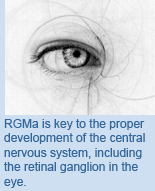 The development of the nervous system depends on the right balance of factors that promote and inhibit the growth of neurons—cells that processes and transmits information in the nervous system—and determines the number, size and direction of their growth. Disruptions in this balance can lead to neurological disorders, such as multiple sclerosis. In a recent study published in Developmental Cell led by TWRI Scientist Dr.
The development of the nervous system depends on the right balance of factors that promote and inhibit the growth of neurons—cells that processes and transmits information in the nervous system—and determines the number, size and direction of their growth. Disruptions in this balance can lead to neurological disorders, such as multiple sclerosis. In a recent study published in Developmental Cell led by TWRI Scientist Dr. 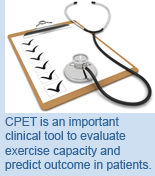 Exercise is an important component of stroke rehabilitation, however information on developing exercise programs for stroke patients is lacking. In a study published in Stroke, TRI Senior Scientist Dr.
Exercise is an important component of stroke rehabilitation, however information on developing exercise programs for stroke patients is lacking. In a study published in Stroke, TRI Senior Scientist Dr. 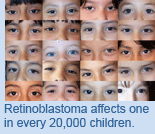 Retinoblastoma—a childhood cancer of the eye—is caused by a mutation in, or a loss of, the retinoblastoma gene (RB). Children with retinoblastoma are at a high risk of developing other types of tumours later in life. Understanding what drives tumour formation in RB-deficient cells could help better understand how to prevent them. TWRI Senior Scientist Dr.
Retinoblastoma—a childhood cancer of the eye—is caused by a mutation in, or a loss of, the retinoblastoma gene (RB). Children with retinoblastoma are at a high risk of developing other types of tumours later in life. Understanding what drives tumour formation in RB-deficient cells could help better understand how to prevent them. TWRI Senior Scientist Dr.